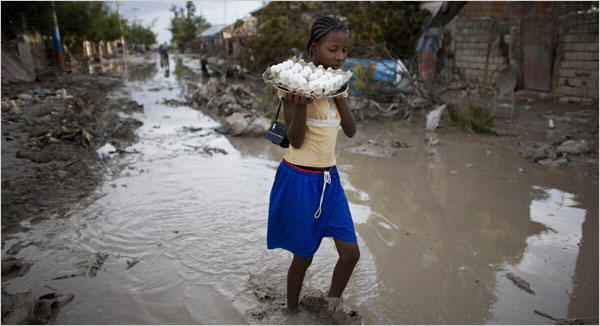| Want to send this page or a link to a friend? Click on mail at the top of this window. |
More Special Reports |
| Posted September 12, 2008 |
| International |
| Battered Haiti, Land of Little, Now Has Less |
|
|
|
 |
|
| ARIANA CUBILLOS/ASSOCIATED PRESS | |
| Many Haitians, used to poverty and suffering, have lost everything to four recent storms. The city of Gonaives remained floded. |
| By MARC LACEY |
| Wehaitians.com, the scholarly journal of democracy and human rights |
| More from wehaitians.com |